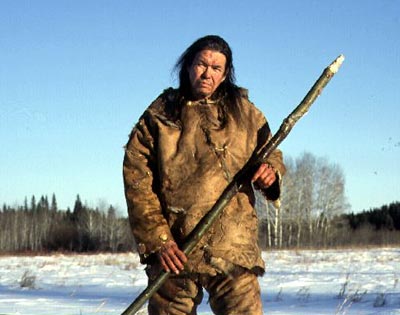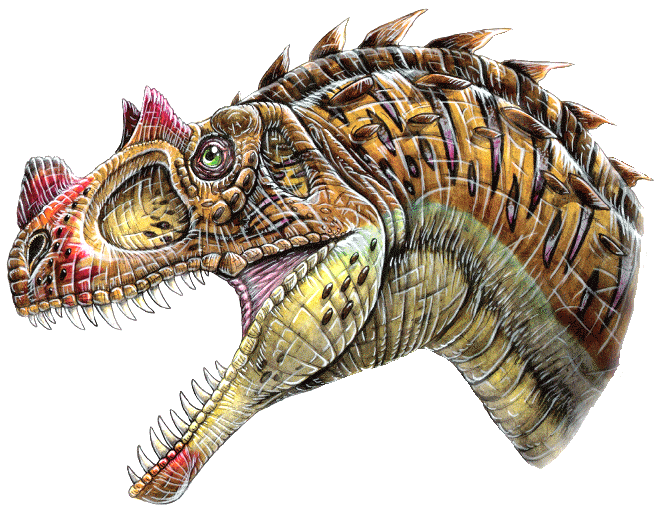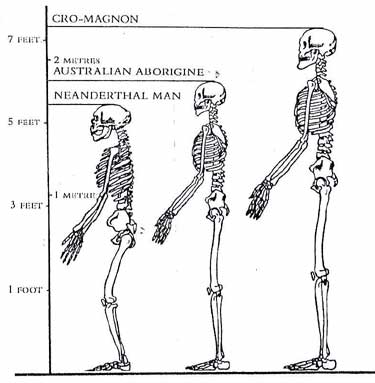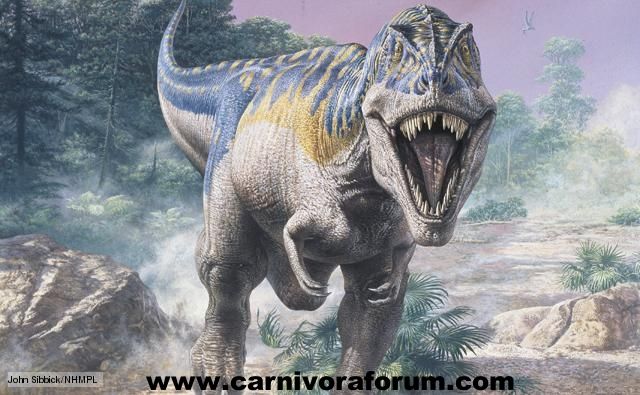Post by Deinobrontornis on Nov 8, 2011 21:13:10 GMT -5
Cro-magnon man - Homo sapiens

Height: 1.8-2.1 meter (5.9-6.9 ft)
Weight: 80-140 kg (176-308 lbs)
Running speed: 25-30 kph (15.5-19 mph)
The Cro-Magnon were the first early modern humans (early Homo sapiens sapiens) of the European Upper Paleolithic. The earliest known remains of Cro-Magnon-like humans are radiometrically dated to 35,000 years before present.
Cro-Magnons were robustly built and powerful. The body was generally heavy and solid with a strong musculature. The forehead was straight, with slight browridges and a tall forehead. Cro-Magnons were the first humans (genus Homo) to have a prominent chin. The brain capacity was about 1,600 cc (100 cubic inches), larger than the average for modern humans. The Cro-Magnons were long limbed and adult males would regularly reach 6 feet 3 inches (190 cm).
Cougar - Puma concolor

The cougar (Puma concolor), also known as puma, mountain lion, mountain cat, catamount or panther, depending on the region, is a mammal of the family Felidae, native to the Americas.
Cougars are slender and agile members of the cat family. They are the fourth largest cats and adults stand about 60 to 90 cm (24 to 35 in) tall at the shoulders. Adult males are around 2.4 m (7.9 ft) long nose to tail and females average 2.05 m (6.7 ft), with overall ranges between 1.5 to 2.75 m (4.9 to 9.0 ft) nose to tail suggested for the species in general. Of this length, 63 to 95 cm (25 to 37 in) is comprised by the tail. Males typically weigh 53 to 100 kilograms (115 to 220 pounds), averaging 62 kg (137 lb). Females typically weigh between 29 and 64 kg (64 and 141 lb), averaging 42 kg (93 lb). Cougar size is smallest close to the equator, and larger towards the poles. The largest recorded cougar was shot in Arizona and weighed 125.5 kilograms (276 pounds) after its intensines were removed, indicating that in life it could have weighed nearly 136.2 kilograms (300 pounds). Several male cougars in British Columbia weighed between 86.4 and 95.5 kilograms (190 to 210 pounds).
The head of the cat is round and the ears erect. Its powerful forequarters, neck, and jaw serve to grasp and hold large prey. It has five retractable claws on its forepaws (one a dewclaw) and four on its hind paws. The larger front feet and claws are adaptations to clutching prey.
Cougars have large paws and proportionally the largest hind legs in the cat family. This physique allows it great leaping and short-sprint ability. An exceptional vertical leap of 5.4 m (18 ft) is reported for the cougar. Horizontal jumping capability from standing position is suggested anywhere from 6 to 12 m (20 to 40 ft). The cougar can run as fast as 55 to 72 km/h (35 to 45 mi/h), but is best adapted for short, powerful sprints rather than long chases. It is adept at climbing, which allows it to evade canine competitors. Although it is not strongly associated with water, it can swim.

Height: 1.8-2.1 meter (5.9-6.9 ft)
Weight: 80-140 kg (176-308 lbs)
Running speed: 25-30 kph (15.5-19 mph)
The Cro-Magnon were the first early modern humans (early Homo sapiens sapiens) of the European Upper Paleolithic. The earliest known remains of Cro-Magnon-like humans are radiometrically dated to 35,000 years before present.
Cro-Magnons were robustly built and powerful. The body was generally heavy and solid with a strong musculature. The forehead was straight, with slight browridges and a tall forehead. Cro-Magnons were the first humans (genus Homo) to have a prominent chin. The brain capacity was about 1,600 cc (100 cubic inches), larger than the average for modern humans. The Cro-Magnons were long limbed and adult males would regularly reach 6 feet 3 inches (190 cm).
Cougar - Puma concolor

The cougar (Puma concolor), also known as puma, mountain lion, mountain cat, catamount or panther, depending on the region, is a mammal of the family Felidae, native to the Americas.
Cougars are slender and agile members of the cat family. They are the fourth largest cats and adults stand about 60 to 90 cm (24 to 35 in) tall at the shoulders. Adult males are around 2.4 m (7.9 ft) long nose to tail and females average 2.05 m (6.7 ft), with overall ranges between 1.5 to 2.75 m (4.9 to 9.0 ft) nose to tail suggested for the species in general. Of this length, 63 to 95 cm (25 to 37 in) is comprised by the tail. Males typically weigh 53 to 100 kilograms (115 to 220 pounds), averaging 62 kg (137 lb). Females typically weigh between 29 and 64 kg (64 and 141 lb), averaging 42 kg (93 lb). Cougar size is smallest close to the equator, and larger towards the poles. The largest recorded cougar was shot in Arizona and weighed 125.5 kilograms (276 pounds) after its intensines were removed, indicating that in life it could have weighed nearly 136.2 kilograms (300 pounds). Several male cougars in British Columbia weighed between 86.4 and 95.5 kilograms (190 to 210 pounds).
The head of the cat is round and the ears erect. Its powerful forequarters, neck, and jaw serve to grasp and hold large prey. It has five retractable claws on its forepaws (one a dewclaw) and four on its hind paws. The larger front feet and claws are adaptations to clutching prey.
Cougars have large paws and proportionally the largest hind legs in the cat family. This physique allows it great leaping and short-sprint ability. An exceptional vertical leap of 5.4 m (18 ft) is reported for the cougar. Horizontal jumping capability from standing position is suggested anywhere from 6 to 12 m (20 to 40 ft). The cougar can run as fast as 55 to 72 km/h (35 to 45 mi/h), but is best adapted for short, powerful sprints rather than long chases. It is adept at climbing, which allows it to evade canine competitors. Although it is not strongly associated with water, it can swim.









